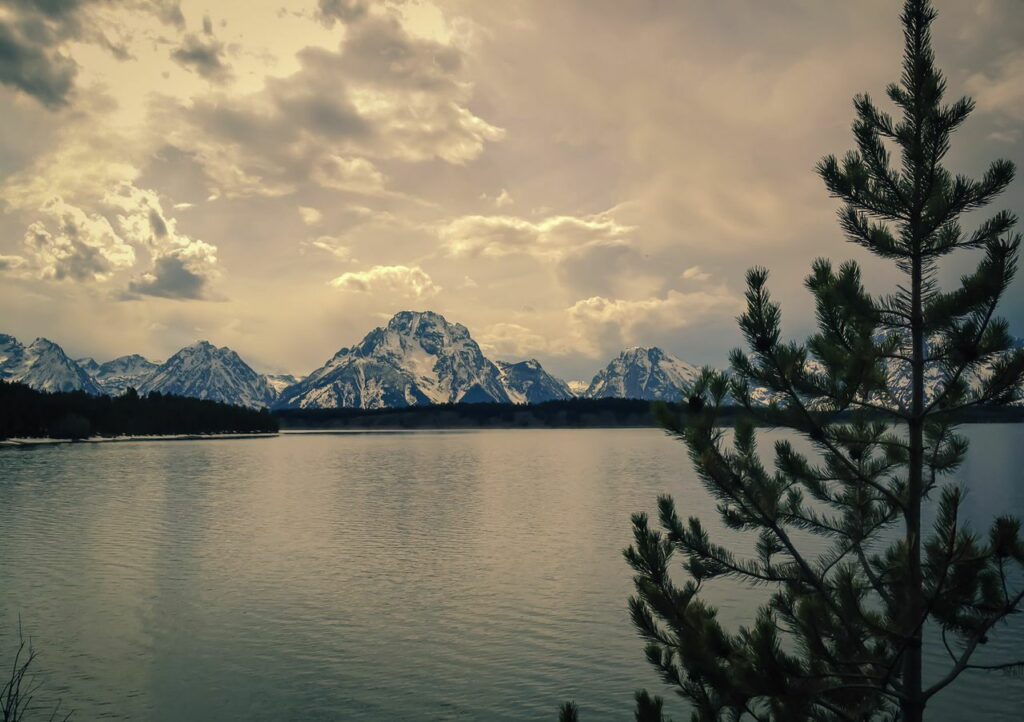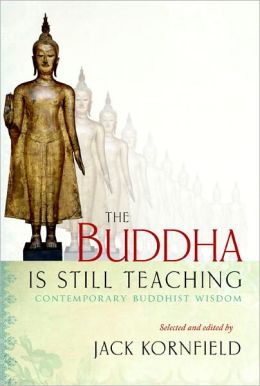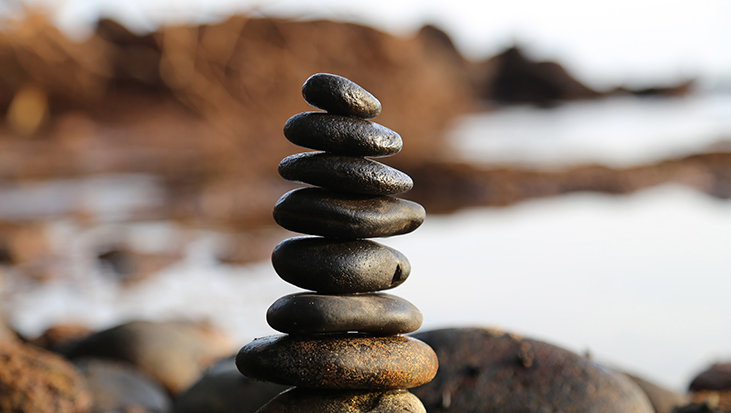“Teach us to care and not to care.” ~T.S. Elliot
If you tell a Zen master everything is like a dream, she will take her stick and whack you over the head. Then she will ask, “Is that a dream?” Focusing on the big picture alone is not enough. Form must be honored. A mature psychology requires us to see from many levels. Ajahn Chah demonstrated this when he held out his hand fully open, flat, and explained that you can rest things on an open hand, but its use is limited. Similarly, if you hold it fully closed, it can strike things, but its use is also very limited. It is only because we can open and close our hand in response to circumstances that our hand works for us.
Sometimes people make the mistake of clinging to the universal level. Like the always open hand, this is a problem. Buddhist texts say that form arises out of emptiness, yet the world of form must be met on its own terms. This is sometimes called suchness. Things are the way they are. From the universal level, we have to return to the world of form and particulars, without being caught in them.
Once a villager came to Ajahn Chah to ask for help with a woman who had lost her mind. In the west we might call her manic or delusional. For days she had been wildly spouting obscenities mixed with Buddhist teachings on emptiness, running around, up all night, disturbing everyone. Many of the villagers felt she was possessed by an evil spirit. Ajahn Chah said he would see her.
He told his monks to quickly dig a big hole next to where he sat. Other monks built a big fire. “Put a huge water pot on the fire,” he said. Soon a group of men and women pulled the poor woman to him and asked him to rid her of the evil spirit.
Ajahn Chah tried to talk to her, but she continued shouting obscenities and talking about emptiness and meaninglessness. He told the monks to hurry up and make the fire hotter and dig the hole deeper. He said that the only way to get rid of such a spirit was to put the woman in the hole, pour boiling water on her and bury her. That should do it, he said. As the water got hot, he said, “You can carry her there in a minute.”
All of a sudden the woman became very quiet and docile. She sat up and talked a bit to him. He sent most of the people away, and began to ask what had happened, listening with real compassion. He heard her whole story. Later he told the superstitious villagers that fear of boiling to death had released her from the evil spirit. What it had really done, he told us, was awaken her self-preservation. Then he could begin to listen to her and direct her to the help she needed.
This is not to suggest that such a radical intervention would be right in our circumstances. Within his cultural context, Ajahn Chah was a kind of shaman. He knew that something in her life had to die. Because Ajahn Chah knew that form is empty, he could play within it in an intuitive and wise way. Yet he never forgot the importance of honoring the tangible realities of the world. On one level everything is like a dream. On another, what we do matters immensely.
When I came back to the United States after my years in the monastery, which had included a year long silent retreat, I was lost in the universal side. I was overly detached. My mind was silent and empty, and everything appeared quite dream like. From this perspective, the western world seemed speedy and driven. It was appallingly materialistic, filled with images of violence, obsessed with success; it seemed to have lost its spiritual understanding altogether.
I had no idea how to fit back in. In my book “A Path with Heart,” I tell the story of going to meet my sister-in-law at Elizabeth Arden’s in New York. I was still in monk’s robes and when I went upstairs to wait at the spa, it was hard to tell who looked weirder. Me, a barefoot, shaven-headed mendicant, or the women with avocado and mud on their faces and their hair in fishing reel contraptions.
After five years in Thailand, it was hard to re-enter the world of form. I had to get a job, find a place to live, open a bank account, make a thousand decisions. I struggled with all these details because they didn’t seem to matter very much in the big picture. Later I heard a story about Maizumi Roshi who asked a student carpenter whether the remodeling of the Zendo would be done soon. “It’s basically done,” replied the student, “there are just some details to finish up.” The Zen master stood shocked for a moment and then announced, “But details are all there are!”
It took me years of work and practice in the world to learn respect for the details of work and money and relationship. Since then, as a teacher I have seen many people like myself who have used spirituality as a way to avoid the world of form. There was Mark, an aging but charming Sufi practitioner, a house-sitter and gardener. Mark had fathered a child in Germany, but he never paid any attention to him, never had any money to share with him. To Mark it was all a part of God’s dance, a dream-like play. But when he was honest, Mark actually wanted a home, a settled life, but he didn’t know how to do it. And Theresa, whose depression was reinforced by the Buddhist teachings of suffering and impermanence. Theresa didn’t know how to make the changes that would have transformed her life, so she justified her stuckness with spiritual platitudes. “It’s all just impermanent and empty,” she would say to make herself feel better.
The problem was that neither Theresa nor Mark were happy in their choices. Their past wounds and trauma kept them stuck on the universal level, spiritualizing their problems. This is common in spiritual circles. Whether it’s a Buddhist saying that “Everything is a dream” or a Christian who believes that “It’s all God’s will,” these truths can be misused to take no personal responsibility. Even the most genuine inner spiritual experience won’t help us if we place ourselves above the world of form. As Alan Jones, Dean of Grace Cathedral in San Francisco once commented, “Spiritual experience can actually lead to inflation. There’s no one more insufferable that someone who thinks they’re more enlightened than anybody else, without a certain sense of humor. I know people who on one level are deeply at peace and enlightened, and yet go crazy if they miss a bus. On one level we may still be five years old, and on another level be a saint. That’s what keeps us humble. That’s why religion is very funny.”
Monastic life in Thailand called on us to wed the universal to the personal. The 228 rules of a monk, the daily alms rounds, bowing to elders, receiving guests, sewing robes, community cleaning and community prayers all were to be done in the spirit of sacred form. “You there,” the signs along the entrance to the forest monastery called out, “Be attentive. This is a place of care and mindfulness. Isn’t it time you started to practice?”
You would have thought such training would help me return to the western world easily, but learning to translate it into modern society took time and care. Each form of life requires our deliberate practice. All are seen as necessary to spiritual maturity. Ajahn Chah discouraged any attempts at a spiritual end-run, or spiritual by-pass. It is no good to talk about freedom and emptiness when our business or marriage is a mess.
One day a student came to see Ajahn Chah and urgently confided, “Ajahn, I have attained the first level of enlightenment!” And Ajhan Chah replied, ‘Well, that’s a little better than being a dog, I guess.’” This comparison is a terrible insult in Thailand, and not said lightly to anyone. Telling the story, Ajahn Chah smiled, “The student didn’t like that, and he went away in a great huff. The ‘enlightened one’ was angry!”
We can’t pretend we are too spiritual for any experience. If we are angry, Ajahn Chah said to admit it, look at its causes, know its particulars. If we are sad or frightened or ashamed or needy, this is our human condition, the perfect place to practice. Ajahn Chah insisted we could not find freedom and enlightenment somewhere else, only here and now. “It is here, in the world of form. Only in form can we develop integrity, patience, generosity, truthfulness, dedication, compassion, the great heart of a Buddha.”
If we fear living the life we’re in, Buddhist psychology insists we explore our resistance. If we are caught in fear of failure, in past trauma or insecurity, engaging the world can be difficult for us. We need to make conscious whatever keeps us from living fully.
This excerpt is taken from the book, “The Wise Heart“






